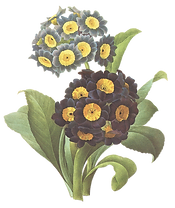Super Spreader
- Cynthia Thomas
- Jul 27, 2021
- 4 min read

Have you heard there’s a blight spreading through the community? It may be hard to detect, easy to prevent and worth your while to get the facts.
I’m not talking about COVID, silly I’m talking about HVX - a virus that has been plaguing the hosta community for the past fifteen years.
I only heard about it last year, about the same time I got interested in filling my shady places with these wonderful herbaceous perennial plants. Grown for their luscious leaf mounds more than their flowers, their beauty (to me) is that at the end of the season the leaves die back. No clean up. No trimming or watering. And next year the rhizomes grow bigger and re-emmerge. The plants don’t migrate around the garden like sedum or take over an area like Lily of the Valley. They’re not invasive like ivy or finicky like Peonies.
And you can split them in the fall and move them around your yard. Well, you could before the dreaded Hosta Virus X.
Now I don’t want to alarm you and I certainly don’t want to spread misinformation, so let’s stick to the facts. HVX is a virus found in some hostas and it can be carried to other hostas, primarily by sap-to-sap contact. It withers the leaves, causes a strange dark vein and/or brown spots.
We don’t have to be afraid of HVX. So far there are no known human or pet fatalities, though some have experienced heart attack-like symptoms when finding an HVX-infected plant in their garden. Only kidding. Elizabeth.
According to George Metezsky, a hosta grower on the American Hosta Society Facebook group: 'HVX was introduced into the hosta production stream in the 1990s. It took a while to do the research to understand how it works and how it is spread. Hosta societies helped fund that research. We now know that most of the spread is from sap-to-sap contact… often due to culture processes and contaminated tools.'
Many hosta aficionados are accused of blaming the big box stores for spreading the disease because their practices include mass production and can therefore result in mass spreading. But I am assured it’s not about any one store because truly many of these plants are grown in other countries and shipped here. The inspection standards, while stringent, still allow that some infected plants get in.
So this is where you and I come in. If we want to help stop the spread, we can implement good gardening techniques that include sanitizing our equipment after working on any one plant. I’ve always heard of doing this for other pests and diseases that can be spread unwittingly by tools, but I’ve been a little lazy in doing it. That is until I had to yank out my old Lost Colony Rose last year that got the fungus Black Spot. Just like the name implies, the leaves would emerge healthy but then get a black spot, turn yellow and fall off.
It reminded me a little like the spread of sin. You usually don’t see the effects at first, but it doesn’t stay contained. The stain of sin soon shows up all over. And if you’re not careful, it can destroy not just one, but many lives.
So I got to thinking, it’s time I do my part. Especially after a recent visit to a fellow gardener’s lovely hosta-filled landscape. She had the most amazing giant, crinkly-leafed hostas, next to vibrant striped ones, with little mouse-eared ones in front. Many of them ringed her hundred-year oaks and created a green “ruffle” around the trunk. This time of year, the plants throw up tall stalks of lavender flowers that bees and butterflies love.
Elizabeth has thus far been HVX-free. She shared that she has dedicated a “sanitizing’ station in her yard, and inside the box has Clorox Wipes and 10 percent bleach spray for her smaller tools. The larger ones get immersed in a bucket of the solution. She wipes down her tools after using them on just one plant and has also quit buying hostas because it is impossible to tell if the plant has a dormant virus.
Unfortunately, many of the symptoms of infected plants look a little like my hostas that get too much sun - dry and brown around the edges. It seems like HVX can mask itself pretty well - not unlike COVID that starts with flu and cough like symptoms. Or like little white lies that don’t seem to hurt anyone. But perhaps it’s time to think a little more soberly and carefully about what we’re spreading.
In his first letter to the Church at Corinth, Paul warns them about the danger of not catching a problem before it spreads: “Your boasting is not good. Don’t you know that a little yeast leavens the whole batch of dough?” I Cor. 5:6
This is one of those verses that really hits home when you read it in the plain language of The Message Bible:
“Your flip and callous arrogance in these things bothers me. You pass it off as a small thing, but it’s anything but that. Yeast, too, is a “small thing,” but it works its way through a whole batch of bread dough pretty fast. So get rid of this “yeast.” Our true identity is flat and plain, not puffed up with the wrong kind of ingredient. The Messiah, our Passover Lamb, has already been sacrificed for the Passover meal, and we are the Unraised Bread part of the Feast. So let’s live out our part in the Feast, not as raised bread swollen with the yeast of evil, but as flat bread—simple, genuine, unpretentious.”























Comments